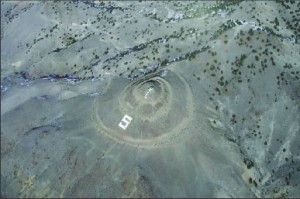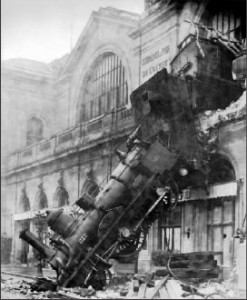by George Sibley
“Capitalism” is one of those words that increasingly has gotten out of hand, in my opinion, much like “Christianity.” Just as we are expected to believe that “Christianity” has something to do with “Christ,” that gentle fellow who preached and practiced love, forgiveness, and judging not, we are expected to believe that “Capitalism” as practiced in America has something to do with “capital.”
This has enabled the hotshots on Wall Street, the Holy Land of American Capitalism, to again confuse and delude themselves and us by equating “capital” with “money,” and peddling the shell-game notion that just moving money around fast somehow increases wealth.
The economist and historian Robert Heilbroner set me straight on the meaning of “capital.” He said, “In a fundamental sense, capital consists of anything which can enhance man’s power to perform economically useful work. An unshaped stone is capital to the caveman who can use it as a hunting implement. A hoe is capital to a peasant; a road system is capital to the inhabitants of a modern industrial society. Knowledge is capital, too – indeed, perhaps the most precious part of a society’s stock of capital.”
No mention of money there. He makes a distinction between money and capital later when he states, “Money only represents claims to society’s real wealth, which is [the] goods and services” produced by investing the society’s capital in “economically useful work.”
Those quotes are from a late-Sixties textbook that struck fear deep into the hearts of many American Capitalists – a book entitled, The Economic Problem. The book posed a fundamental question which was: “Can our kind of economic society produce a decent, peaceful, compassionate way of life? Or can the troubles of our time be corrected only drastically, by dismantling American capitalism and creating a new economic system?” (His italics).
Then, as now, a good question, except that now, we may not have to argue over whether we have to dismantle American Capitalism; it seems to once more be in the process of dismantling itself. But the drastic part of his question is the last part: how do we go about “creating a new economic system”? That is such a drastic challenge that we are still trying to deny that it is hovering on our horizon. Instead we are trying, in a kind of a feverish but stunned way, to figure out how to “stimulate” the old economy. In an futile effort to again crank up the mindless production-consumption cycle of stuff that has been stressing the planet for half a century while our true capital assets – our roads, our resources, our knowledge – have been sliding into decline.
But suppose we have to come to the realization, this year or next or the next, that our only real hope is to “create a new economic system”? What might that be?
I would propose we try – again – a more honest form of capitalism, something Heilbroner might call “a decent, peaceful, compassionate” form of capitalism. And we in fact have one that we have already given a very successful test run: the Rural Electrification Administration, or REA, something analogous to what our president says he wants – a bipartisan form of capitalism.
Seventy years ago in the Upper Gunnison, the Republican ranchers and businessmen and the Democratic miners got together in a bipartisan way and organized a cooperative to bring electricity to the rural parts of the valley, an opportunity made possible only by the extension of financial capital and knowledge capital from the federal government. In 1939, citizens of the valley’s towns had already had electricity in their homes for almost half a century – Crested Butte since 1890, Gunnison since 1894. This was true for the nation at large; virtually every city and town had electricity, either through a municipal or investor-owned utility. But only one rural citizen in nine had electricity.
Then as now, there was a fundamental unresolved cultural question. Is something like electricity a “public good” to raise the quality of everyone’s lives, or is it a private-sector “commodity” to be distributed through a market environment only to those who could afford it? The private utilities – the American Capitalists – wanted it to be a profitable commodity, and found it “unprofitable” to extend lines into low-density rural areas. And the municipal utilities who considered it a public good were usually limited – legally as well as financially, thanks to private utility lobbying – to service within their incorporated limits.
But in the depths of the Great Depression, the Roosevelt administration came down squarely on the side of electricity as a public good.
“Electricity is a modern necessity of life,” Franklin Roosevelt declared, “And ought to be found in every village, every home, and every farm in every part of the United States.” The Rural Electrification Administration was created in 1935 to carry out this goal.
As then-director Morris Cooke set it up, the REA differed from other New Deal programs in that it did not involve federal spending beyond staff; it was instead a loan program – basically “government capitalism.” The REA loaned low-interest money and expertise to cooperatives created by rural people who wanted electricity but had no other access to the necessary capital. The REA as a capital resource outlasted most of the rest of Roosevelt’s New Deal by half a century, and may have been the New Deal’s most successful single program. Today more than 900 cooperatives like the Gunnison County Electric Association comprise the utility infrastructure for rural America.
I’m not bringing this up at this time just for nostalgia’s sake. President Obama is obviously going to the New Deal playbook for some (unfortunately small) parts of his “stimulus” program, but as far as I can tell, he is overlooking that most successful New Deal program.
For one thing, it was truly a bipartisan program down on the ground, one that “Main Street Republicans” and “Farm Republicans” could support – even as the “Wall Street Republicans” of the big investor-owned utilities fought it viciously, with lawsuits at the national level and “spite lines” at the local level to pick up big customers like mines and mills (“stealing the cream and leaving us the skim milk,” as one co-op manager put it). For rural people, “socialist make-work” programs such as the WPA or CCC were not appreciated, but the REA was accepted as a capital investment proposition. It provided financial and knowledge capital to people with “sweat equity” to invest, made good things happen, and the initial investment money was paid back.
One lifelong Republican who bought into the REA kind of capitalism was the governor of Vermont (later Senator) in the 1930s, George Aiken, who said as he threw the switch on a REA project, “These lines have been built into territories which private corporations have consistently refused to serve at prices within the reach of the people . . . But the cooperative, working under the REA program, does not inflate its capital structure, does not pay high official salaries, does not hire high priced attorneys, does not maintain expensive legislative lobbies, does not pay tribute to holding companies, and does not employ high pressure and expensive publicity methods to expound its virtues.” He understood the distinction between Main Street and Wall Street, real capital investment and American Capitalism.
Now fast-forward to today. In this valley, and all over the country, communities like ours are beginning work on a major energy transition, trying to minimize our near-total dependence on fossil fuels, both because fossil fuel emissions are contributing to an increasingly chaotic climate, and because we know we will run low on “easy” fossil fuels within the next generation. The State of Colorado has set a goal of reducing fossil-energy emissions 20 percent by 2020, and here in the Upper Gunnison we are taking this seriously, and are working on coordinated community energy action plans to do our part in meeting the State’s goal.
But as we work on these plans, it becomes obvious that we are going to need some upfront investment – some financial capital to complement our knowledge capital and sweat equity. The major part of our 20 percent energy reduction will have to come through increasing the energy efficiency of existing buildings. However, to do a good “energy makeover” of a pre-1980s building can cost from $1,000 to $10,000, and most people cannot afford it as an out-of-pocket expense. “American Capitalists” – if there are any still solvent – would not consider such a venture profitable enough. And we’re confronted with the contradiction that, when the people need them the most, the state and local governments are as busted as the people, having to cut services at the time when government services are most important.
That leaves the federal government, which can do deficit spending – or lending. If the money were fronted by a “Community Energization Administration,” to be paid back over time out of energy savings, we could get the job done, with minimal increase in federal debt. The American Capitalists would of course employ their house media to howl about “socialism” – but why are we still listening to them?
Are you listening, Mr. President? Congress? Put up the money capital, and we’ll do the work and you’ll see the first Bush’s “thousand points of (CFL/LED) light.” And rather than laying it on the next generation as a burden of debt, we’ll pay it back, like the REA co-ops did, for the next generations to use in finishing the work of “creating a new economic system” for “a decent, peaceful, compassionate way of life.” It’s time.
George Sibley writes from Gunnison, where electricity is still delivered the old-fashioned way.



